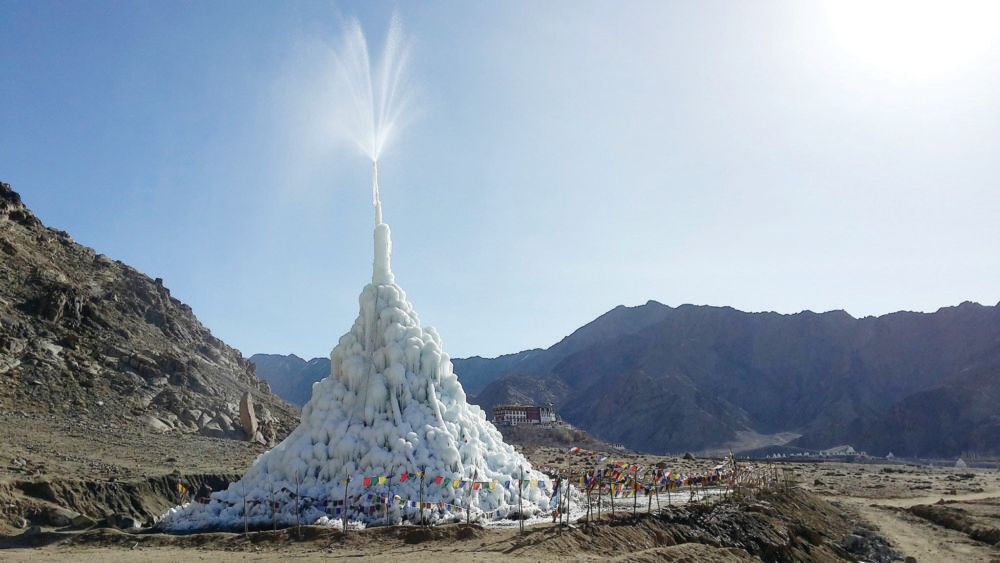The spectacular Ladakh region of Jammu and Kashmir lies at about 3,500 meters above sea level, at an altitude between the Kunlun and Great Himalayan mountain ranges. It may be visually resplendent, but the high altitude desert is an extremely harsh environment, especially for the farmers among its population, who face acute water shortages during the early crop-growing period between April and May. The huge outflows of glacial melt water – sometimes in the form of destructive flash floods — do not begin until after that crucial period. That’s where Sonam Wangchuck, the recent Rolex Awards for Enterprise laureate, steps in.
Wangchuk was certain that access to water in the desert landscapes around many high-altitude towns and villages of Ladakh could be improved, if the seasonal outflows of glacial water could be frozen and harnessed. He was inspired by the pioneering work of fellow Ladhaki Chewang Norphel, who had created flat, artificial glaciers at heights of 4,000 meters and above. However, villagers were reluctant to climb that high to maintain them. It was a tantalising situation: a logical water supply solution was available, but faced challenges. That’s when Wangchuk had his eureka moment, as he walked past a bridge over a stream in the village of Phey, near the educationally and environmentally innovative SECMOL Alternative School, which he conceived and built in the 1990s. “I saw that there was ice under the bridge, which at 3,000 meters was the warmest and lowest altitude in the whole area,” Wangchuck recalls, “and this was in May. So I thought we can keep ice right here in Phey if we protect it from the sun, but where do you get shade? I began to think about reflective materials, and then I started thinking about reducing the surface area for a given volume of ice, realising that basically the sun needs surface area to heat things up.”
He then developed a remarkably simple and e ffective system, creating what he calls “ice stupas”, conical ice mounds that behave like mini-glaciers, slowly releasing water for the growing season. Wangchuk has always believed that education and care for the environment should go hand in hand, and so, in 2013, he and his students from the SECMOL Alternative School began to create prototypes of the ice stupas. Wangchuk likens them to Tibetan religious stupas – elegant hemispherical or conical structures. Sonam intends to build up to 20 such ice stupas, each 30 metres high and capable of supplying millions of litres of water.
“The Rolex Award funds will support the project and promote ice stupas as a climate-change adaptation and desert-greening technique,” says Wangchuk. He is currently working on establishing an alternative university on the 65-hectare land donated by the village that will engage youth from Ladakh, the Himalayas and other mountains of the world in finding their own solutions to the challenges facing them – a spirit that is epitomised by the ice stupa project. “With the SECMOL alternative school in Phey, we wanted to go ahead and talk about higher education now. We aim to start our own university which will be called the ‘Himalayan Institute of Alternative Science. What we presented to Rolex is just a small portion of a larger canvas”, Wangchuck says.






